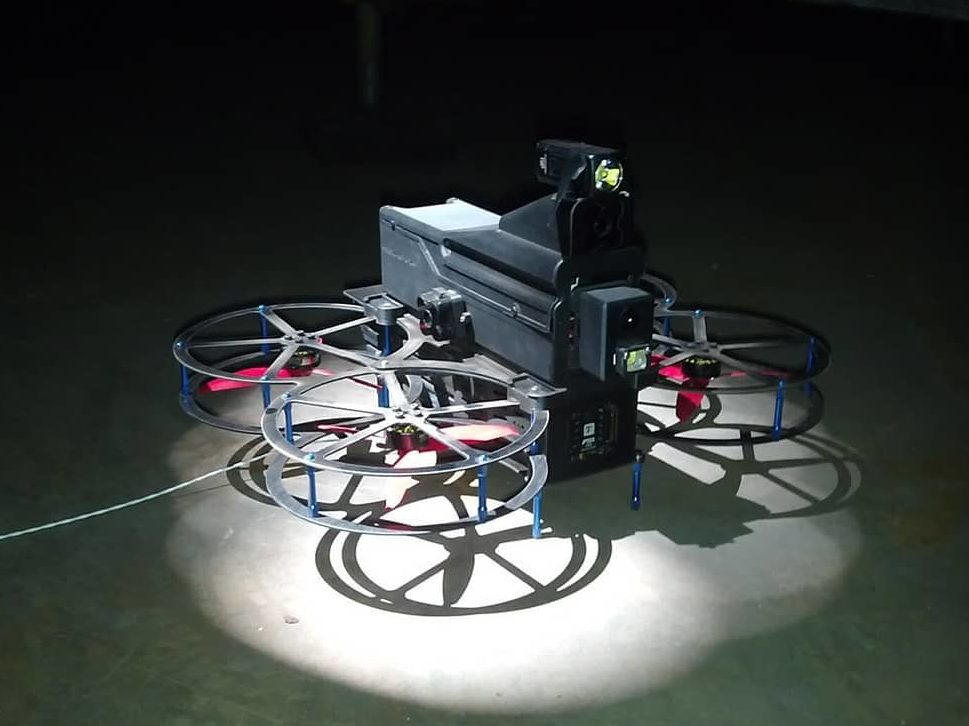Following his look at the winners of the Singapore start-up competition last week, Brian Dixon looks at one of the other company’s with a bright idea, Performance Rotors with its unique drones.
The compact aerial drones developed by Singapore startup Performance Rotors are able to enter confined spaces too tight for many existing systems, opening up whole new areas in the field of remote inspection.
Unmanned aerial vehicles (UAVs) are increasingly being used around the globe by both commercial entities and class societies alike to inspect maritime assets. This is perhaps unsurprising given the many benefits such drones can offer. After all, not only can their remote operation reduce the safety risks often faced by inspectors, but they can also speed up inspection times as they do away with the need for scaffolding or rafting. Moreover, drones can also provide inspectors with high-quality images of often hard-to reach places that can then be analysed at length, with the upshot being more effective yet less costly and much safer surveys.
However, many of the drones used for inspections today can arguably encounter serious difficulties that limit their efficacy when it comes to operating in confined spaces, areas of magnetic interference or locations where communication with the Global Positioning System (GPS) cannot be achieved. “Drones typically rely on GPS signals, magnetic heading information and sufficient light (using optical cameras to ‘see’ the ground) to hold position safely,” says Keith Ng, CEO and co-founder of Singapore-based drone developer Performance Rotors. “Confined spaces offer none of these. Darkness, the lack of distinctive features/patterns on the ground [and] flying too far from the ground renders optical hold useless.”
“To overcome these limitations, we employ a combination of different sensors on board, with our own coding for a common language for communications between the flight controller and different sensors. We call it ‘Sensor Fusion’,” he continues. “Besides the cameras we use that capture high-definition footage in low-light conditions without distortion, we have an Ultrasonic Thickness Measuring (UTM) probe on board. Ours, as far as I know, is the smallest smart drone in the world with an UTM gauge.”
“At the core, Performance Rotors seek to reduce risk faced by inspectors across industries who are exposed to the dangers of falls and confined spaces in their daily work to prevent failures, keeping us safe,” Ng states, noting that confined spaces can be particularly hazardous, with fatal incidents within them “usually [claiming] more than one life” when they occur. “We design and make drones that are tailored for specific environments, requirements and inspection challenges faced by our clients. Such bespoke machines are not available off the shelves. There are some models we have that will be available for leasing, but those with non-destructive test equipment are only available as a service operated by our team.”
“Our drones are small and robust enough to go where they are most needed,” Ng asserts. Moreover, because the company’s drones employ a modular design, their payloads can be quickly changed, enabling them to perform various other tasks in addition to visual inspection. Similarly, Performance Rotors is keen to work with clients to develop individually tailored systems as needed. “Where there is no readily available drone solution, we can design and build one quickly, while others try to modify third-party drones designed for outdoor use with reliance on GPS signals, which are seldom successful,” he says.
In addition to drones, the company is also in the process of developing its own cloud-based software that uses artificial intelligence (AI) to detect structural surface defects. While Ng notes that “there is still much to be done”, he reports that the software can currently recognise and detect cracks in concrete. “We are building it to be able to recognise defects found on vessels, where the defects are found on board, compare findings against previous inspections and [then] generate reports, recommendations and provide statistical data for improvement to processes or build designs.”
Performance Rotors recently received a special mention for its drones at the PIER71 Smart Port Challenge in Singapore. It’s flagship Raven drone design, which can be powered by batteries or via a tether for extended flight times, measures 400 mm x 350 mm when using 6″ propellers and just 330 mm x 290 mm when using 5″ rotors. This, in the company’s words, makes it “the only non-GPS-assisted inspection drone of this size to offer the capabilities of an industry-grade GPS-drone”.

































